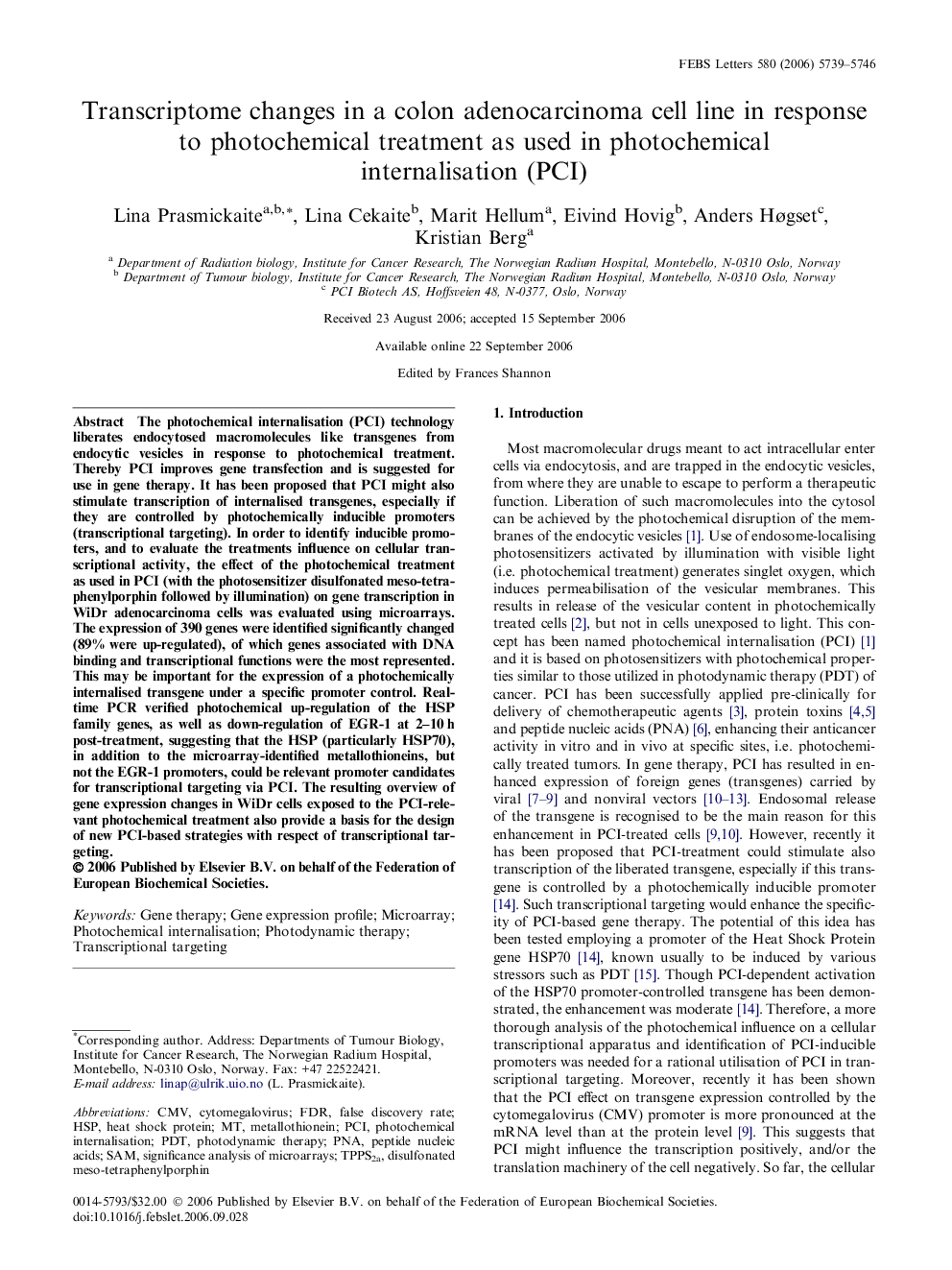| Article ID | Journal | Published Year | Pages | File Type |
|---|---|---|---|---|
| 2050898 | FEBS Letters | 2006 | 8 Pages |
The photochemical internalisation (PCI) technology liberates endocytosed macromolecules like transgenes from endocytic vesicles in response to photochemical treatment. Thereby PCI improves gene transfection and is suggested for use in gene therapy. It has been proposed that PCI might also stimulate transcription of internalised transgenes, especially if they are controlled by photochemically inducible promoters (transcriptional targeting). In order to identify inducible promoters, and to evaluate the treatments influence on cellular transcriptional activity, the effect of the photochemical treatment as used in PCI (with the photosensitizer disulfonated meso-tetraphenylporphin followed by illumination) on gene transcription in WiDr adenocarcinoma cells was evaluated using microarrays. The expression of 390 genes were identified significantly changed (89% were up-regulated), of which genes associated with DNA binding and transcriptional functions were the most represented. This may be important for the expression of a photochemically internalised transgene under a specific promoter control. Real-time PCR verified photochemical up-regulation of the HSP family genes, as well as down-regulation of EGR-1 at 2–10 h post-treatment, suggesting that the HSP (particularly HSP70), in addition to the microarray-identified metallothioneins, but not the EGR-1 promoters, could be relevant promoter candidates for transcriptional targeting via PCI. The resulting overview of gene expression changes in WiDr cells exposed to the PCI-relevant photochemical treatment also provide a basis for the design of new PCI-based strategies with respect of transcriptional targeting.
